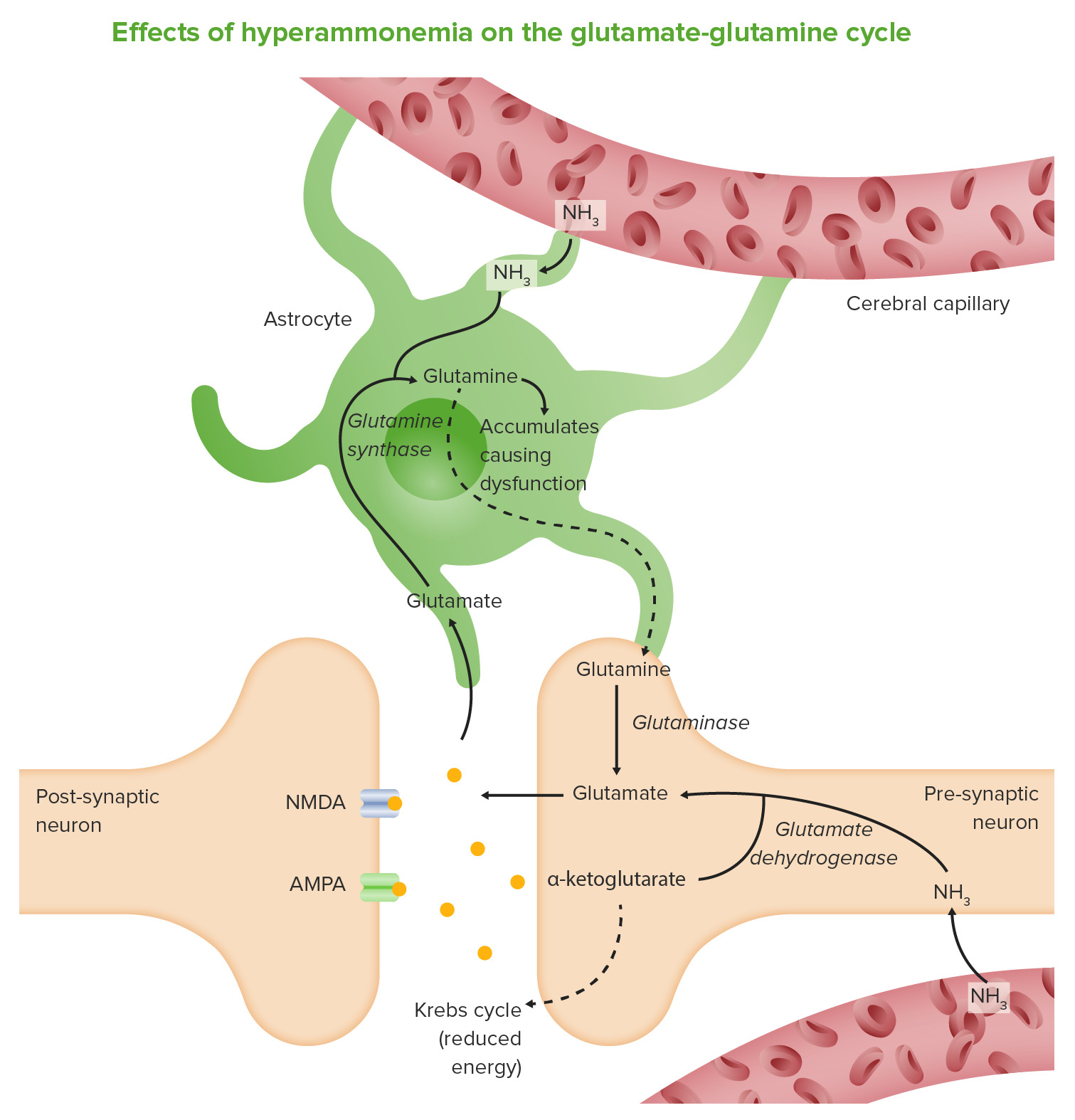Playlist
Show Playlist
Hide Playlist
Hepatic Encephalopathy
-
Slides GD liver disease.pdf
-
Download Lecture Overview
00:01 Hepatic Encalopathy Let's talk about how, when there is liver damage, that the brain is not being injured. 00:08 The pranchoma, welcome to hepatic Encephalopathy. 00:11 This is reversible decline in cognitive fucntion. 00:15 Stop there. 00:16 The fact that you can even find cognitive function to be reversible is quite interesting. 00:22 And actually limits the number of diagnoses. 00:26 Here, if you are able to take care of the liver, then you'll notice the decline of cognitive function improves. 00:33 Believed to be due to bypass of toxins Meaning to say, that maybe your ammonia, mercaptans instead of being properly detoxified in the liver, ends up in your head. 00:43 hepatic encalopathy asterixis Often precipitated by bleeding infection electrolyte disturbance Diagnosis is clinical supported by elevated ammonia levels. 00:56 NH3. 01:01 Clinical presentation. Grades, you have 0-4 by West Haven Criteria. 01:06 Alterations of behavior to frank coma. 01:08 Asterixis, hyperreflexia and fetor hepaticus. 01:13 are clinical presentations that you want to keep in mind when reading a stem of a question and they want you to think along the lines that the liver is severely compromised. 01:26 Management: Lactulose non-absorbable antibiotics-Lactulose. 01:33 You treat the underlying exacerbating factors. 01:36 Avoid narcotics and, sedatives. 01:39 Airway protection for frank coma. 01:41 Remember, your patient is already in a state of brain damage. 01:45 And so, therefore by giving a patient a sedative, you're only making matters worse. 01:49 Lactulose, bind perhaps the ammonia and then therefore, relieve some of the encephalopathy
About the Lecture
The lecture Hepatic Encephalopathy by Carlo Raj, MD is from the course Liver Diseases: Basic Principles with Carlo Raj.
Included Quiz Questions
A patient with a history of alcoholic cirrhosis presents with cognitive dysfunction and asterixis. After having the liver function assessed, the patient was administered lactulose, electrolytes, benzodiazepines, and non-absorbent antibiotics. Despite the extensive regimen, the patient went into a coma, and endotracheal intubation was performed. Which of the following is the MOST likely cause of worsening of the patient's liver function?
- Use of benzodiazepines
- Use of lactulose
- Use of non-absorbent antibiotics
- Use of electrolytes
- Endotracheal intubation
Which grading system is used for hepatic encephalopathy?
- West Haven criteria
- Dukes grading system
- Clarke grading system
- Nguyen grading system
- MELD scoring system
Which of the following statements regarding hepatic encephalopathy is FALSE?
- It is an irreversible condition.
- It is precipitated by bleeding.
- Lactulose is a treatment option.
- Mercaptans and ammonia bypass the blood-brain barrier.
Customer reviews
1,0 of 5 stars
| 5 Stars |
|
0 |
| 4 Stars |
|
0 |
| 3 Stars |
|
0 |
| 2 Stars |
|
0 |
| 1 Star |
|
1 |
Carlo Raj simply read the slides, he could've said so much more about this important topic...




